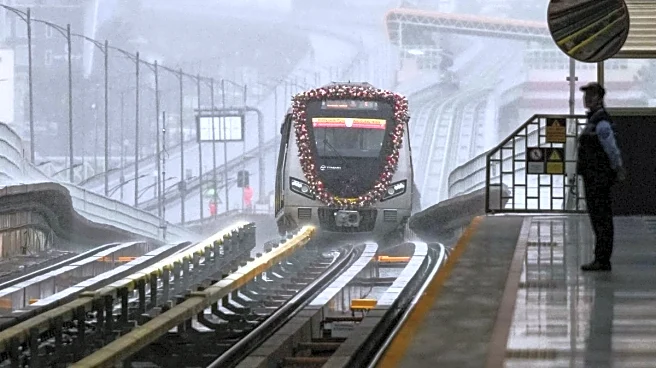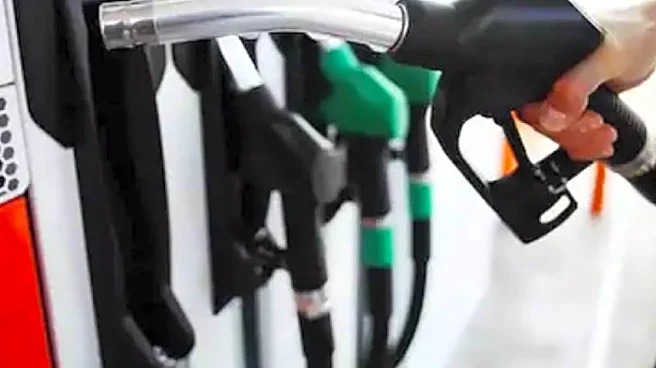After the launch of the much-awaited Yellow Line in August, which connected parts of Bengaluru city to one of its oldest and biggest IT hubs, Electronic City, another corridor is now in the spotlight — the Red Line. Expected to significantly ease mobility across tech hubs along the Outer Ring Road and adjoining residential areas, the Red Line is being billed as one of Namma Metro’s most ambitious and expensive undertakings yet.
As Bengaluru’s traffic continues to test the limits of patience, the Namma Metro’s Red Line holds another promise of a smoother, faster commute between its tech corridors and core city areas. With the Yellow Line already operational and the Blue and Pink Lines in the pipeline, the Red Line is being positioned as the final
missing link — one that could redefine urban movement in India’s tech capital.
The much-anticipated Red Line, part of Namma Metro Phase 3A, will stretch from Hebbal in the north to Sarjapur in the south, creating a crucial link through the city’s eastern and southern zones. The Bangalore Metro Rail Corporation Limited (BMRCL) has floated tenders worth Rs 6.86 crore for geotechnical investigations across four packages, a vital prelude to the start of construction. The last date for bid submission is November 3, and once awarded, contractors will have 150 days to complete the survey.
The Red Connection
A top BMRCL official told News18 that the Red Line project has officially set its wheels in motion. “This corridor will connect Hebbal to Sarjapur, covering key residential and commercial belts. The geotechnical study is the first step towards understanding what we’re building on, before we begin actual construction,” the official said.
“The combination of elevated and underground alignments is what makes this line technically complex and cost-heavy,” the official explained. “Nearly half the route passes through dense urban areas, so we need precision in every step — from geological assessment to tunnelling design.”
The project’s tentative completion deadline is December 2030, though BMRCL officials say it could extend to 2031 depending on the pace of approvals and clearances. “We’re working on a tight schedule, but a project of this scale involves multiple layers of approval, especially from the Centre. These things take time,” the official said.
DPR at the Centre, Reassessment Underway
At present, the Detailed Project Report (DPR) for the Red Line is with the Union Ministry of Housing and Urban Affairs (MoHUA). According to BMRCL, the Ministry has sought a re-examination of the underground construction costs, which form a major chunk of the budget.
“Basically, the DPR submitted to the Centre has been sent back to us for review,” the official said. “MoHUA has asked us to revisit certain cost components related to the underground section. A third-party study has been done, and a draft discussion is currently underway with the Ministry. Once finalised, it will be resubmitted for further processing.”
The Centre’s approval is expected by the end of 2025, following the reassessment. The Karnataka Cabinet had cleared the proposal in December 2024, but with the Centre holding a 50% equity share in Namma Metro, the cost rationalisation process must be completed before final clearance.
Officials said the Ministry’s directive was to appoint an independent consultant to benchmark and rationalise the costs. “We are re-evaluating the expenditure with an external consultant as directed by the Centre,” the official confirmed.
Bengaluru’s Costliest Metro Corridor
The Red Line is estimated to be the costliest project in Namma Metro’s history, pegged at Rs 28,405 crore — approximately Rs 776 crore per kilometre. The high cost stems from the large underground section, complex geology, and extensive land acquisition involved.
“Land acquisition itself forms a major portion of the total cost,” the BMRCL official explained. “We need about 161.65 acres, including 55.69 acres of private land identified near Sarjapur Circle for the proposed depot. The estimated cost for land alone is Rs 8,080 crore.”
Asked if this makes the Red Line unusually expensive, the official said cost escalations are inevitable in long-term infrastructure projects. “When a project is initiated and executed across different years, inflation and evolving construction norms come into play. Also, Bengaluru’s rocky geology adds to the challenge — tunnelling here costs much more than in other cities,” the official said.
He added, “We are also exploring innovations to bring down costs. A balance has to be maintained between technical feasibility and financial prudence. That’s exactly what the ongoing reassessment aims to achieve.”
The Route and Reach
The Red Line will pass through some of Bengaluru’s most crowded and high-traffic areas — Agara, Koramangala, Dairy Circle, Bellandur, St. John’s Hospital, NIMHANS, Central College, Cunningham Road, and Mehkri Circle. Of the total route, 16.8 km from Koramangala to Hebbal will be underground, while the elevated stretch from Sarjapur to Koramangala 3rd Block will host 15 stations. The underground section, running from Koramangala 2nd Block, will have 11 stations.
What the Geotechnical Study Means
The current tenders focus on the geotechnical investigation — a crucial phase that determines the soil and rock composition along the route. The study helps in finalising foundation depths for elevated structures and the stability parameters for underground tunnelling.
“The geotechnical study is not just about digging soil,” the official said. “It’s about mapping what lies beneath at every 25 to 50 metres. When we prepared the DPR, we took samples at intervals of about half a kilometre. But for detailed design, we need precise data at much smaller intervals.”
According to the official, the study results will directly impact how contractors design the underground portions and select the right Tunnel Boring Machines (TBMs). “Every section of Bengaluru has a different subsoil profile — from hard granite to weathered rock — and we need to design accordingly. This is why the Red Line requires detailed geological mapping before we start any major work,” the official said.
“No Delay, Only Due Process”
When asked if the project has been delayed, the BMRCL official was firm. “I wouldn’t call it a delay,” he said. “For any project of this magnitude, the approval process involves several rounds of technical scrutiny. It’s capital-intensive, and every rupee must be justified. So naturally, there will be questions and clarifications.”
He added that the Centre’s review of costs was both expected and necessary. “The revisiting of the underground costs is a good thing. Bengaluru’s geological conditions are unique — the cost of construction here is higher compared to other metro projects in India. This re-evaluation ensures transparency and accountability before moving forward.”
The official also pointed out that while the DPR undergoes scrutiny, preparatory works like geotechnical surveys and preliminary designs are progressing in parallel. “We’re not sitting idle. The groundwork continues so that once the approval comes, we can move quickly into execution,” he said.
“Every new line changes the city a little,” the BMRCL official said. “The Red Line will not just connect two ends of Bengaluru — it will connect livelihoods, opportunities, and time itself. That’s what this project is really about.”
How the Red Line of the Metro Fits Into Bengaluru’s Metro Map
Currently, three lines — Green, Purple, and Yellow — are operational in Bengaluru. The Pink Line (Kalena Agrahara to Nagawara) is expected to be ready by 2026, while the Blue Line (Silk Board to Kempegowda International Airport) is slated for 2027. The Red Line will join this network as part of Phase 3A, extending Namma Metro’s reach to newer zones in the city.
BMRCL officials say the Red Line will transform intra-city connectivity, linking the southern IT corridors with central business districts and northern residential zones. “Once operational, this line will provide seamless movement between the ORR tech clusters and the northern suburbs. It’s a game changer for daily commuters,” the official said.
Why the Cost Matters
The MoHUA’s insistence on reassessment is not just procedural — it also affects how the project will be financed. Since both the Government of India and the Government of Karnataka share equity in Namma Metro, every financial revision needs dual approval. The outcome of the cost rationalisation will determine the final funding model and the timeline for execution.
“This is standard procedure,” the official clarified. “When the Centre contributes 50% equity, they need full clarity on why certain costs are higher. It’s not an obstacle — it’s a safeguard.”
He added that third-party validation is already underway. “We’ve appointed an external consultant who’s looking at everything from tunnelling technology to material pricing. Once that’s complete, we’ll submit the revised cost estimates to MoHUA.”
The Red Line is part of the broader Phase 3 expansion plan, which includes multiple new corridors aimed at filling connectivity gaps left by earlier phases. Phase 1 and 2 of Namma Metro together account for over 114 km of network, including both operational and under-construction stretches. Phase 3A, anchored by the Red Line, adds another 36.59 km and 28 stations, forming the backbone of the next stage of expansion.
“Phase 3A is about connecting the dots — linking key employment zones and residential clusters that were left out earlier,” the BMRCL official said. “This particular line will bring Sarjapur, Koramangala, and Hebbal into one continuous corridor, which has been a long-standing commuter demand.”
The Track Ahead
BMRCL’s current focus is on wrapping up the geotechnical survey and incorporating its findings into the final design. Once MoHUA clears the DPR, tenders for civil construction will follow.
“Metro projects in Bengaluru are a marathon, not a sprint. Bengaluru needs and hurdles are different from other cities like Mumbai, Kochi or Delhi,” the BMRCL official said. “From soil testing to the final station signboard, every stage takes planning and patience. But we’re moving steadily.”









/images/ppid_a911dc6a-image-176027109352188283.webp)

/images/ppid_a911dc6a-image-176025942728623622.webp)


/images/ppid_a911dc6a-image-176034043360781208.webp)
